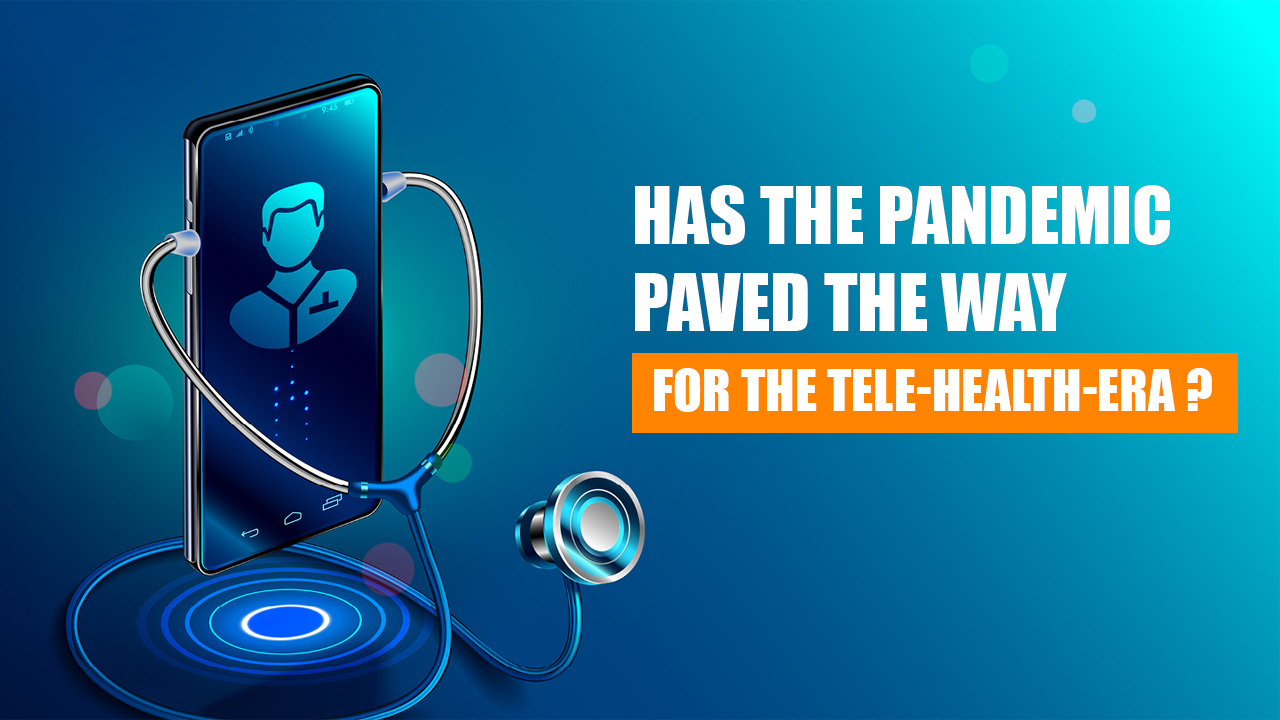
The pandemic, for sured has caused a drastic change in the lifestyle of the people all over the world. The medical emergency has resulted in several alternate options emerging out to be in the mainstream choices.
Telemedicine, a term which has suddenly been used since past year has now become extremely popular among not just the medical fraternity but also to that of the layman. Therefore, it is important to understand the ideology behind telemedics, its objectives, challenges, merits and analyse its importance and scope in the future prospects.
In simplest terms, “ Telemedicine is the practice of medicine using technology to deliver care at a distance. A physician in one location uses a telecommunications infrastructure to deliver care to a patient at a distant site.”
During the COVID-19 pandemic, mandatory social distancing and the lack of effective treatments has made telemedicine the safest interactive system between patients, both infected and uninfected, and clinicians.
As a result, telehealth is emerging as an effective and sustainable solution for precaution, prevention and treatment to stem the spread of COVID-19.
Telehealth refers broadly to electronic and telecommunications technologies and services used to provide care and services at-a-distance.
Day by day telehealth is bridging the gap between people, physicians and health systems, enabling everyone, especially symptomatic patients, to stay at home and communicate with physicians through virtual channels, helping to reduce the spread of the virus to mass populations and the medical staff on the frontlines, said Dedi Gilad, CEO and co-founder of Tyto Care, a telemedicine technology company.
The term telehealth includes a broad range of technologies and services to provide patient care and improve the healthcare delivery system as a whole. Telehealth is different from telemedicine because it refers to a broader scope of remote healthcare services than telemedicine. While telemedicine refers specifically to remote clinical services, telehealth can refer to remote non-clinical services, such as provider training, administrative meetings, and continuing medical education, in addition to clinical services. According to the World Health Organization, telehealth includes, “Surveillance, health promotion and public health functions.”
1. Minimizing risk to healthcare workers
Telecare has managed to reduce the risk to the healthcare workers to several folds. Only the most essential and unavoidable cases are reported on one-on-basis in the hospital. Most of the chronic, regular checkups and consultations are prefered in the tele-medium.
2. Improves patient engagement with remote monitoring
WHen in treatment, the major struggle clinicals face is to make the patient understand about the strategy and methods of self care in between the visits. The tele medium has managed to overcome this obstacle as the patients can be directly in contact with the health supervisors.
3. Expands access to care and reaches more patients
Networking has made the world a small place. Booking an appointment with the doctor you want, choosing your own comfort consultation timings has managed to expand the access to care in the large sections of the society by reaching more patients.
4. Improves clinical workflows and increases practice efficiency
The doctors and the healthcare professionals plan ahead of your appointment hence saving the time and workforce of both the doctor and the patient. And thus improving clinical workflow and increasing the practice efficiency.
5. Easy consultations
Many times, doctors suggest cross consultations and even patients also prefer to consult at least 2 doctors before making any decision. In telemedicine, consulting any doctor of your choice just takes a few clicks and is completely hassle-free.
1. Medical Data Privacy
Data is an extremely sensitive area. With the use of Information and communication technology (ICT), there is a high chance of association with its struggles. If the data is not well protected there is a slight concern that it may fall in the wrong hands
2. Technological concerns
The issues like hardware, software or internet or mobile network are extremely common and unprecedented in this medium.
3. Physical Diagnosis and Treat of the patient is Difficult
Sometimes, doctors, required to personally observe the symptoms which the patient may be unaware of. For such cases, physical consultation is always recommended.
The real role of telemedicine and telehealth at present lies in the convenience it offers to the patients and practitioners by limiting the necessity for a physical visit to get medical advice or treatment. It is also cost-effective in comparison to the process of waiting to see a doctor or other healthcare provider.
It can also help select urgent calls after a doctor’s office is closed. It is of immense value in the follow-up of patients with chronic diseases such as diabetes, high cholesterol, or high blood pressure. In these individuals who are not experiencing any immediate medical problem, but require help with dosage adjustments, lifestyle regimens, prescription refills, or even just access to group support, can benefit from the convenience of telemedicine.

Victoria University of Barbados, School of Medicine (VUB) is one of the well-recognized and fastest-growing medical universities in Barbados, North America. Among other recognitions, the University is listed in World Directory of Medical Schools (WDOMS), chartered by Ministry of Education, Science, Technology and Innovation, Government of Barbados, approved by Medical Council of India (MCI), and offers US-Based International-Standard MD Program (equivalent to MBBS).
Know more about The University, MD Program, or contact us for admission inquiries.